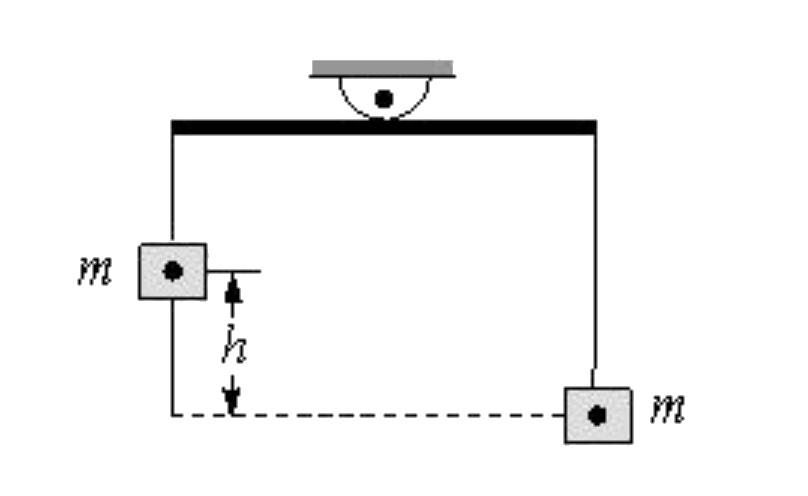Two objects of equal mass rest on the opposite pans of an arm balance. Does the scale remain balance when it is accelerated up or down in a life ?
Yes, since both masses experience equal fictitious forces in magnitude as well as direction.
Topper's Solved these Questions
- BOOK - ALLENCHAPTER - NEWTON'S LAWS OF MOTION & FRICTIONEXERCISE - EXERCISE (S-1)26videos
NEWTON'S LAWS OF MOTION & FRICTION
- BOOK - ALLENCHAPTER - NEWTON'S LAWS OF MOTION & FRICTIONEXERCISE - EXERCISE (S-2)9videos
NEWTON'S LAWS OF MOTION & FRICTION
- BOOK - ALLENCHAPTER - MOTION IN A PALNEEXERCISE - SOLVED EXAMPLE28videos
MOTION IN A PALNE
- BOOK - ALLENCHAPTER - NEWTONS LAWS OF MOTIONEXERCISE - EXERCISE-III28videos
NEWTONS LAWS OF MOTION
Similar Questions
An object 'X' of volume 200 cm^(3) and another object Y of volume 250 cm^(3), when placed on the two pans of a common balance they balance each other. Determine the ratio of density of X and density Y
View SolutionAn object 'X' of volume 200 cm^(3) and another object Y of volume 250 cm^(3), when placed on the two pans of a common balance they balance each other. Determine the ratio of density of X and density Y
View Solution
Knowledge Check
- Question 1 - Select One
Assertion :− Two objects of equal mass rest on the opposite pan of an arm balance. Scale will remains balanced, when it is accelerated up or down in a lift.
Reason :− Both masses experience equal fictitious forces magnitude as well as direction.AIf both Assertion & Reason are True & the Reason is a correct explanation of the Assertion.BIf both Assertion & Reason are True but Reason is not a correct explanation of the Assertiion.CIf Assertion is True but the Reason is False.DIf both Assertion & Reason are False - Question 2 - Select One
Two equal masses are kept on the pans of a simple balance in a lift acceleration upward. Then.
APans will remain at the same levelBNothing can be said as data is incompleteCleft side pan will lower down.DRight side pan will lower down. - Question 3 - Select One
Two identical blocks of mass m are suspended from a beam balance whose scale pans differ in vertical height by h(<<R), if R and ρ are the radius and density of the earth, then the error in weighing is
 A23πρR3GmB83πρGmhC83πρR3GmD43πρGm2h
A23πρR3GmB83πρGmhC83πρR3GmD43πρGm2h
Two metal blocks A and B were placed on the two pans ofa common balance and the beam of the balance was horizontal. However, when the blocks were interchanged and block B was placed in the left pan and block A in the right pan, the beam was not balanced and tilted down toward the left. Discuss the various factors that could be the cause of this. Are the masses of two blocks equal?
 View Solution
View SolutionWhen two solids are put in two pans of a beam balance, they exactly balance each other in air. When the two solids are completely immersed in water alongwith pans of balance, then they no longer balance each other. Which of the following is the incorrect statement about these balls?
View SolutionTwo identical blocks of mass m are suspended from a beam balance whose scale pans differ in vertical height by h(h<<R), if R and ρ are the radius and density of the earth, then the error in weighing is
 View Solution
View SolutionWhen slightly different weights are placed on the two pans of a beam balance, the beam comes to rest at an angle with the horizontal. The beam is supported at a single point P by a pivot.
View SolutionTwo equal masses each m are hung from a balance whose scale pans differ in vertical height by h. The error in weighing is
View Solution

